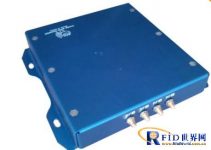
Yuan Rui Channel Bridge UHF RFID Electronic Toll Management Application Scheme
[ad_1]
1. Introduction to the system
The road and bridge electronic toll management system is specially designed to solve the problem of modern traffic, especially the highway toll.RFIDThe technology realizes that there is no need to park, no cash, no manual intervention, automatic tolling and accurate and reliable when passing the road and bridge, thereby reducing the mechanical wear of the car, fuel consumption and exhaust gas emissions, speeding up the passage of the car, improving the efficiency of the road and bridge, and at the same time The possibility of wrong collection and missed collection is reduced to a minimum.
Luqiao UHF RFID electronic toll collection management application program
The road and bridge electronic toll collection system mainly uses radio frequencyelectronic labelThe identification technology firstly meets the inspection and management of annual tolls, and reserves information access ports for various management functions such as vehicle maintenance fee collection, annual inspection, and transportation management, and effectively prevents the use of fake cards and sets of cards to evade payment. Ticket tolls to improve road capacity. It can realize automatic vehicle identification and high-efficiency management, which is of great significance to further strengthen the management of road and bridge annual tolls, improve the traffic environment, and save energy and reduce emissions.
2. System composition
System includes carElectronic signReading and writing system, lane control equipment, monitoring computer, toll network system.
Three, work flow
When the vehicle passes the road and bridge lane and enters the communication area of the lane antenna, the electronic tag installed in the vehicle immediately sends vehicle information, driving record information and other information to the lane antenna. After the lane antenna receives the information, the information is transmitted to the transaction controller through the transaction controller. The lane control machine, after the information is processed by the lane control machine, the current driving record and other information are transmitted to the lane antenna in the reverse direction, and finally the electronic tag of the vehicle is written.
In this way, each toll station can calculate the toll receivable by obtaining the driving record of the vehicle, and then deduct the account from the bank account opened by the owner of the vehicle through the toll network to realize automatic charging.
Four, system advantages
Long-distance reading, high-speed acquisition of vehicle electronic tag information, the accuracy rate is not less than 99.7%;
Innovative technology, comprehensively and effectively solve the interference problem of adjacent vehicles;
24-hour uninterrupted work without supervision;
The vehicle label has a unique anti-dismantling function, and can also be used in conjunction with an electronic license plate to ensure “one car, one card”;
Improved toll processing capacity and lane traffic rate, avoiding traffic congestion;
Automatic management around the clock, adapt to all kinds of bad weather.
5. System implementation benefits
First of all, the application of the road and bridge electronic toll management system can allow vehicles to pass through at high speed (up to 120 kilometers per hour), which can greatly improve the capacity of the road; at the same time, the electronic toll collection of roads can reduce the cost of toll management, which is beneficial to Improve the operational efficiency of vehicles, and can greatly reduce the noise level and exhaust emissions of the toll gate. As the traffic capacity has been greatly improved, the scale of toll stations can be reduced, and infrastructure and management costs can be saved.
Secondly, the implementation of the project established a vehicle-relatedRFIDThe basic platform of management: (1) All units and public parking lots can easily implement parking fee management; (2) The transportation department can implement blue-plate car inspection, vehicle anti-theft, traffic flow monitoring, etc.
In addition, the electronic toll collection system is not only an advanced toll technology for cities, it is also a practical and effective traffic management method that regulates traffic flow through economic levers. For sections such as bridges and tunnels with heavy traffic, the non-stop toll collection system can avoid the many weaknesses of the monthly ticket system and manual toll collection, and effectively improve the fund recovery capacity of these municipal facilities.
Recommended Products:
IVT930-4A four-channel RFID reader
Yuanruitong IVT930-4A four-channel RFID reader is an industrial-grade reader that complies with EPC C1G2 (ISO18000-6C)/ISO18000-6B dual protocol standards. It has a wide operating temperature range, excellent reading and writing performance, and Strong network stability and other characteristics can be widely used in manufacturing and supply chain, digital warehouse management, commercial retail, asset management, clothing management, vehicle management and other fields.

Features:
1. Built-in Impinj R2000 chip, fully explore the potential of R2000 chip;
2. Using advanced anti-jamming and anti-collision DRM algorithms, it supports processing more than 400 tags per second;
3. Ultra-high sensitivity;
4. The vehicle management recognition distance can reach up to 35 meters;
5. It can adapt to the vehicle speed up to 120KM/H;
6. Quickly read TID to ensure label safety;
7. Low-power design, greatly reducing energy consumption;
8. The internal software has been repeatedly optimized to provide the fastest operating efficiency and the most concise development interface;
9. Enhanced multiple protection circuits provide comprehensive protection.
[ad_2]



